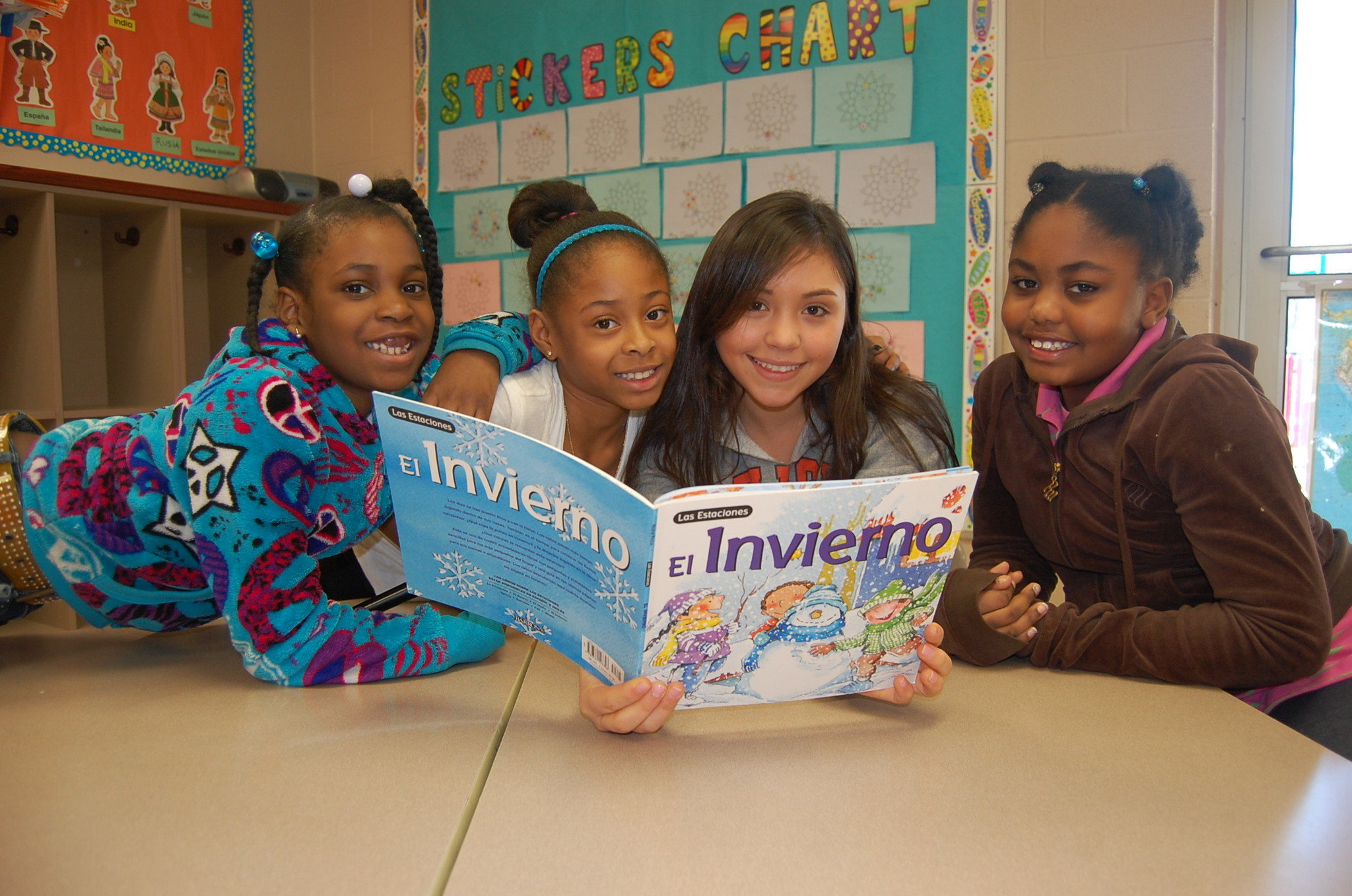Teaching Spanish to middle school students can be both exciting and challenging. At this stage, students are discovering their identities and learning to express themselves in new ways.
A well-designed Spanish curriculum for middle schools can inspire students to explore the world through language and culture. In this post, we’ll discuss what makes a strong curriculum, share strategies to keep students engaged, and offer solutions for common classroom challenges.
Whether you’re developing your own Spanish program or looking for effective resources, these insights will help you create a plan that supports student success.
Why a Middle School Spanish Curriculum Matters
Middle school is a key time for students to begin or continue learning a second language. Here’s why:
- Early Learning Advantage: Research shows that students who start learning a language early have a higher chance of achieving fluency. The earlier, the better!
- Building Communication Skills: Middle schoolers are at an ideal age to practice speaking and listening—essential for real-world communication.
- Cultural Awareness: Exploring Hispanic and Latin American cultures helps students expand their perspectives and develop a more global mindset.
Unfortunately, when budget cuts happen, world language programs are often among the first to be reduced. Many still view language learning as an elective rather than an essential part of a well-rounded education. By emphasizing these key benefits, you can help build a strong program that prepares students for long-term success in Spanish.
Exploratory Spanish Curriculum for Middle School
Transitioning to a semester schedule meant having 7th and 8th graders for one nine-week quarter each. With only one teacher handling the program, continuity was possible across the years. Many students returned for a second year, allowing lessons to build on previous knowledge while introducing new activities and lesson plans.
Starting each quarter with a unit focused on high-frequency verbs created a strong foundation for communication. It reinforced essential verbs while helping both returning and new students engage in meaningful conversations. Special class interviews were a great way to keep content fresh since they were always centered around different students.
At this stage, comprehensible input was the primary teaching method. By the second quarter, 8th graders even read a beginner Spanish novel, using activities tailored to their level. The curriculum was never structured around a traditional textbook but was instead developed independently to suit the needs of middle school learners.
Diversity of Middle School Spanish Programs
Middle school Spanish programs vary widely depending on the school and district. Some programs offer exploratory Spanish, while others aim for a structured, sequential curriculum. Understanding different models can help shape a curriculum that best serves students’ needs.
Structuring a Middle School Spanish Program
Curriculum design depends on how the program is structured. A well-planned approach ensures clear learning objectives for each grade level.
Heritage Spanish Classes
Schools with a significant number of native or heritage Spanish speakers may offer a specialized heritage Spanish class. These classes often focus on literature and culture, using authentic materials to build upon students’ existing language skills. Some programs meet daily like core classes, while others alternate days with elective courses. In some models, each grade level might focus on different regions of the Spanish-speaking world, keeping cultural exploration at the center while developing language proficiency.
Unfortunately, heritage language programs are often at risk due to budget cuts. Many well-designed heritage Spanish programs have been reduced or eliminated, forcing educators to adapt to new teaching environments.
Continuing from Elementary School Spanish
A program that builds from elementary school Spanish has great potential for language acquisition. In some schools, students continue developing their Spanish skills from 5th grade onward with an immersive and structured curriculum. Ideally, these programs focus on comprehensible input and real-world communication rather than rote memorization.
In many cases, K-8 Spanish programs are found in private schools, where language learning is used as a way to attract students. Unfortunately, these programs often face challenges such as low pay for teachers and high turnover rates. In some schools, students repeatedly learn basic topics like colors and numbers year after year, without much progress toward fluency.
Middle School Exploratory Spanish
Some schools offer exploratory Spanish programs that provide students with an introduction to the language without a long-term commitment. These programs may be entirely in Spanish, particularly in schools where Spanish is the only world language option.
Other schools use a language sampler approach, where students rotate through different languages for short periods. For example, a student might take Spanish for one quarter and French for another. Some schools even introduce multiple languages in a single class, with students spending just a few weeks on each one.
Class Schedules and Meeting Frequency
How often a middle school Spanish class meets greatly impacts language retention and skill development. Ideally, students should have frequent, consistent exposure to the language.
- Daily Classes for a Short Period: Some exploratory programs meet every day for a nine-week quarter, providing regular exposure in a condensed time frame.
- Less Frequent but Longer Duration: Other programs meet every other day or follow a specials rotation, where Spanish is scheduled alongside subjects like music, PE, and art.
- Sequential vs. Elective Programs: In some schools, all students take Spanish for a set period during 7th and 8th grade, creating a sequential learning experience. In other programs, students choose whether to take Spanish in any given year from 6th to 8th grade. When participation varies, teachers can introduce new themes while recycling essential language skills to accommodate both new and returning students.
Traditional vs. Alternative Approaches to Middle School Spanish
Some schools follow a textbook-based curriculum, dividing a Spanish 1 textbook into sections across three years.
- 6th Grade: Focuses on basic vocabulary and simple conversations, such as greetings, numbers, and classroom phrases.
- 7th Grade: Expands vocabulary and introduces grammar concepts, covering topics like family, hobbies, and daily routines.
- 8th Grade: Builds on previous knowledge with more complex grammar and conversation topics like travel, shopping, and celebrations.
While this traditional approach works for some programs, others opt for more dynamic methods that prioritize communication and cultural exploration.
Key Components of an Effective Middle School Spanish Curriculum
A strong curriculum blends language skills with interactive and culturally rich experiences.
Cultural Exploration
Introducing students to traditions, music, and holidays from Spanish-speaking countries makes language learning more engaging. Lessons on cultural topics, such as Día de los Muertos, can include vocabulary, history, and hands-on activities. Teaching culture in Spanish allows for both linguistic and cultural immersion, maximizing student learning.
Some teachers focus on different Spanish-speaking countries throughout the course, using videos and interactive activities to introduce students to diverse cultures.
Building Communication Skills with High-Frequency Verbs
High-frequency verbs are essential for real-world communication. While some programs emphasize grammar concepts such as verb conjugation and sentence structure, others prioritize fluency by teaching functional language chunks. Performance-based assessments allow students to demonstrate what they can communicate rather than focusing solely on memorization.
Developing Reading, Listening, Speaking, and Writing Skills
Providing ample input through listening and reading activities lays a strong foundation for language acquisition. Speaking and writing skills develop more gradually, so it is important to be patient and create opportunities for natural output.
Interactive and Movement-Based Activities
Middle school students benefit from activities that keep them engaged and active. Games, storytelling, and hands-on projects encourage participation and reinforce learning. Movement-based activities are particularly effective for this age group, as they help maintain focus and enthusiasm.
Establishing Clear Routines
Structured routines are crucial for maintaining consistency in middle school Spanish classes. Daily warm-up activities, such as bell ringers or short discussions, help students transition into the lesson. Having predictable yet varied class structures improves engagement and language retention.
Vocabulary Development
If required to follow a specific vocabulary list, it is best to keep it simple and functional. Everyday topics such as greetings, school, family, and hobbies are relevant and practical for middle school students. Instead of focusing on long vocabulary lists, emphasizing high-frequency words and commonly used phrases leads to better communication skills.
Structuring a Middle School Spanish Lesson Plan
A well-balanced lesson plan should incorporate multiple learning modalities.
- Warm-Up: Begin with a short activity to review previous material and set the tone for the lesson.
- Main Lesson: Introduce new content through engaging methods such as storytelling, interviews, or cultural discussions.
- Movement Activity or Brain Break: A short movement-based activity keeps students energized and focused.
- Practice: Provide opportunities for students to engage in group work, independent practice, or interactive games.
- Wrap-Up: Conclude with a reflection or exit ticket to assess student understanding.
By incorporating structured routines, interactive lessons, and cultural elements, middle school Spanish programs can foster meaningful language development while keeping students engaged in the learning process.
Benefits of Using a Pre-Made Middle School Spanish Curriculum
Developing a curriculum from scratch requires significant time and effort. Opting for a structured, pre-made curriculum can offer several advantages:
- Time Efficiency: Focus more on teaching and engaging with students rather than spending hours on lesson planning.
- Structured Learning: Ensure a logical and consistent progression of language skills and cultural topics.
- Student Engagement: Utilize resources designed specifically to capture the interest of middle school learners.
Final Thoughts
An effective middle school Spanish curriculum should integrate cultural learning, practical communication skills, and interactive activities. By organizing lessons thoughtfully and addressing common challenges, educators can create an engaging program that fosters a love for Spanish and builds student confidence.







More Stories
Kindergarten 2 Tuition Prepares for Primary English
How to Improve Your Childs Spelling and Grammar
A Guide to Scholarships and Bursaries